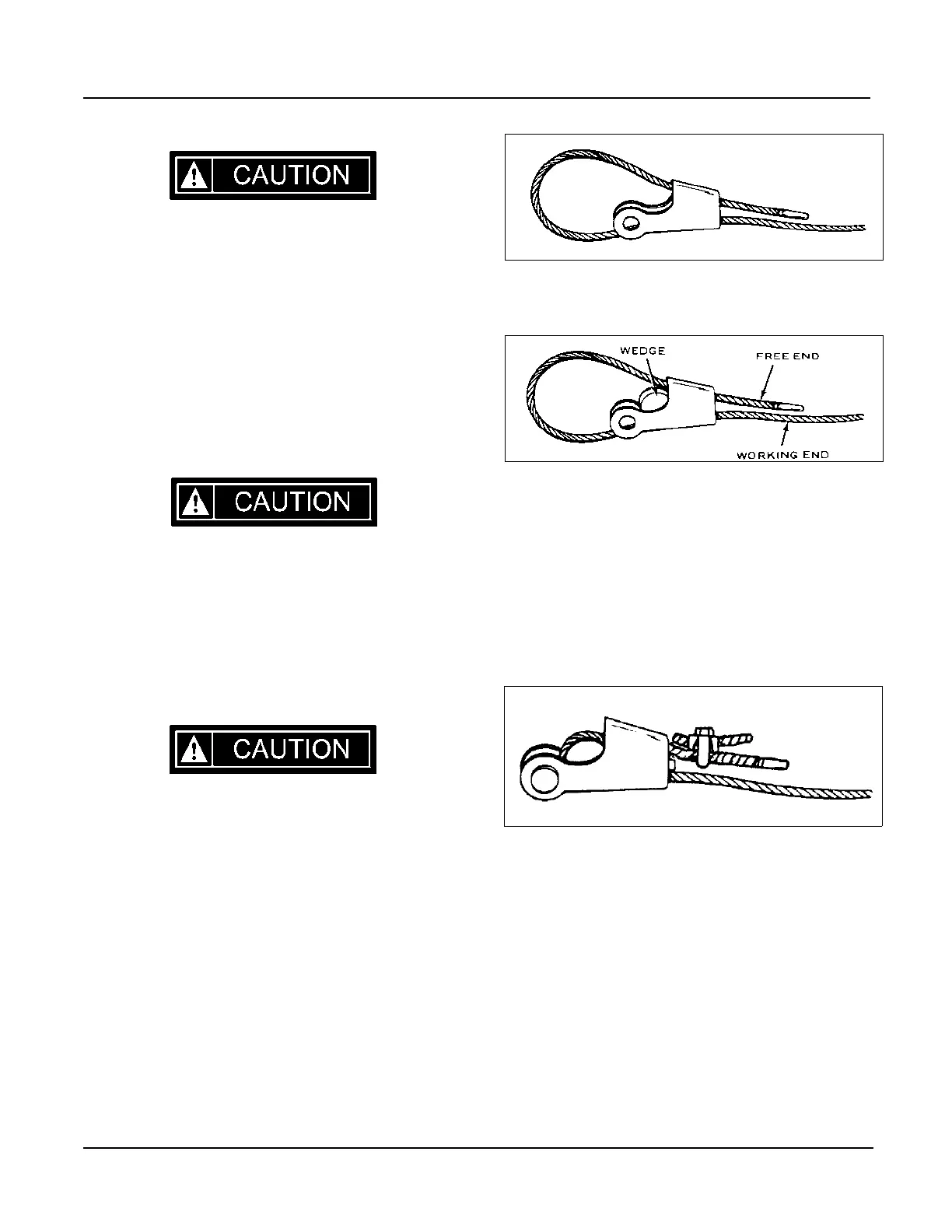The wrong cable wedge could permit the wire rope to
work lose and detach itself from the drum; possibly
causing property damage or personal injury.
Tension the wire rope by braking the shipping reel and
slowly operate the winch in the raise mode to wind the
cable onto the winch drum. As the spooling proceeds,
make sure the adjacent turns are tight against one an-
other. A lead or brass hammer may be used to tap the
rope over against preceding turns. Tight winding on the
drum is absolutely essential.
Never use a steel hammer or pry bar to move the rope
over on the drum. These tools can easily damage the
rope.
After the rope is wound onto the winch drum, reeve the
cable as desired.
Use only factory supplied sockets, wedges and pins of
the proper size; make no substitutions.
Follow the procedure below when installing wedge
type sockets on wire rope. Be certain the correct sock-
et and wedge are used.
1. Lead the rope through the socket, form a large loop
and draw the rope end back through the socket. A
length of rope equal to at least one rope lay should
be drawn back through.
MAINTENANCE AND LUBRICATION
2. Insert the wedge and allow the rope strands to adjust
around it.
3. Seat the wedge and loop just tightly enough to allow
handling by attaching the socket to a strong support
and engaging the winch to take a strain on the rope.
4. Final seating of the wedge is accomplished by mak-
ing lifts of gradually increasing loads. avoid imposing
shock loads on the rope until the wedge is firmly in
place.
5. After the wedge has been firmly seated, a short
length (6 inches) of the cable should be secured to
the free end of the wire rope to act as a stop as
shown. DO NOT clamp the free end to the load sup-
porting end as this will weaken the rope.
4 - 34 Revised: March 2005RT700 Series
